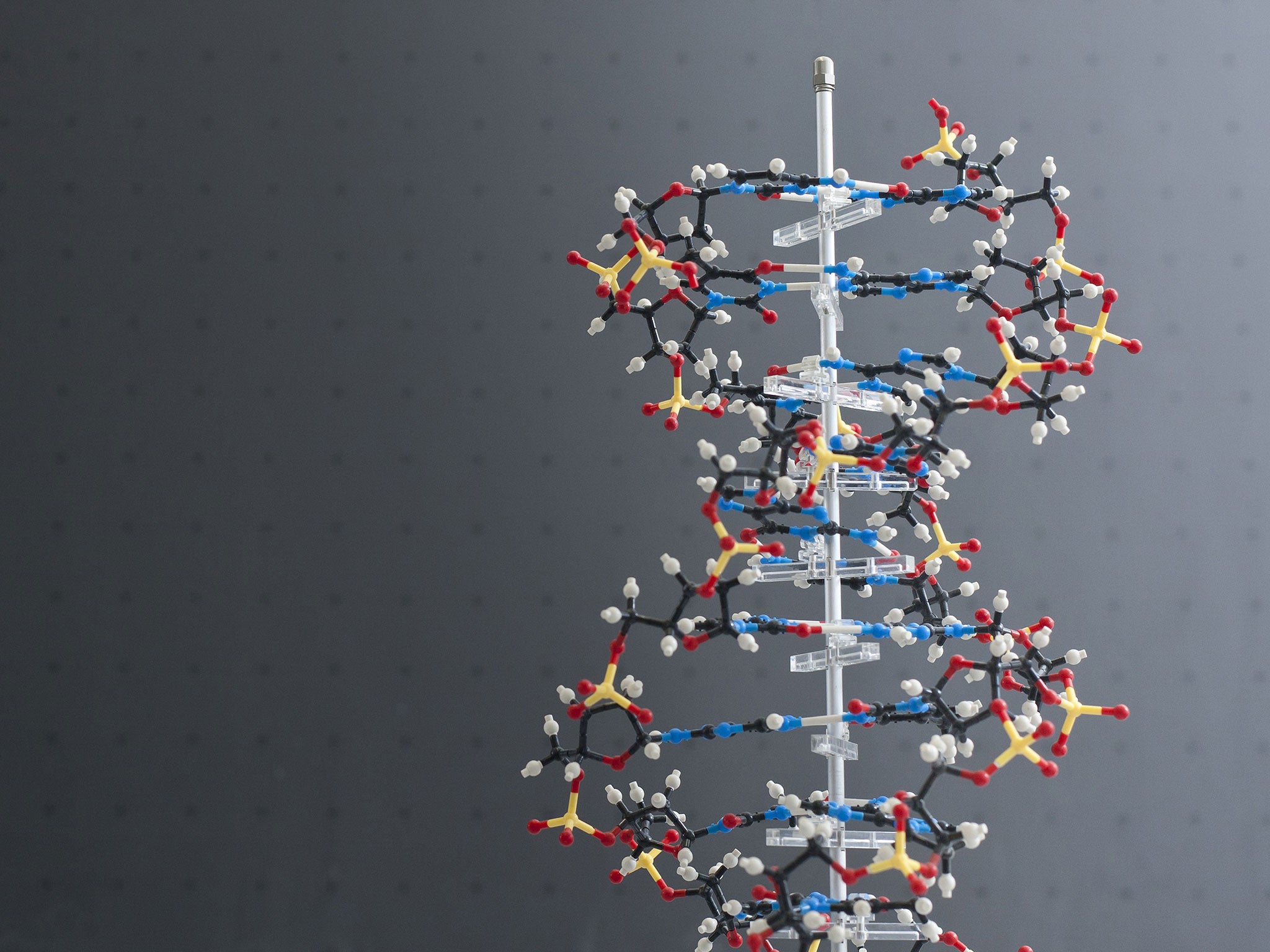Single DNA molecule could store information for a million years following scientific breakthrough
Everything from ancient texts to Wikipedia changes could be archived

Your support helps us to tell the story
From reproductive rights to climate change to Big Tech, The Independent is on the ground when the story is developing. Whether it's investigating the financials of Elon Musk's pro-Trump PAC or producing our latest documentary, 'The A Word', which shines a light on the American women fighting for reproductive rights, we know how important it is to parse out the facts from the messaging.
At such a critical moment in US history, we need reporters on the ground. Your donation allows us to keep sending journalists to speak to both sides of the story.
The Independent is trusted by Americans across the entire political spectrum. And unlike many other quality news outlets, we choose not to lock Americans out of our reporting and analysis with paywalls. We believe quality journalism should be available to everyone, paid for by those who can afford it.
Your support makes all the difference.Scientists have developed a way of storing vast quantities of information for up to a million years in a single molecule of DNA.
The breakthrough could lead to digital archives of everything from ancient texts to Wikipedia changes being stored in the form of DNA that could in theory survive for hundreds of thousands of years without any loss of data.
Robert Grass and colleagues of the Swiss Federal Institute of Technology (ETH) in Zurich said they have pioneered a process of encapsulated DNA in glass that is equivalent to creating a fossilised form of data storage.
They have also developed a mathematical algorithm normally used in long-distance radio transmissions to eliminate any errors when deciphering the data written in the digital genetic code of DNA.
“We will show how we can use modern chemical and information engineering tools for the safeguarding of actual digital information in the form of DNA,” the researchers told the American Chemical Society meeting in Boston.
Dr Grass said that his team has converted 83 kilobytes of text from the medieval Swiss Federal Charter of 1291 and the Methods of Archimedes from the 10th Century into the digital code of DNA based on sequences of four chemical building blocks, the nucleotides A, C, T and G.
“A little after the discovery of the double helix architecture of DNA, people figured out that the coding language of nature is very similar to the binary language we use in computers,” Dr Grass said.
“On a hard drive, we use zeros and ones to represent data, and in DNA we have four nucleotides, A, C, T and G,” he said.
The DNA molecules were synthesised by machine and heated to 71C for a week, which is equivalent to being stored at 50C for 2,000 years, after which it was decoded back into the original text without any errors, Dr Grass told the meeting.
Information archivists have warned that modern forms of data storage, such as magnetic disk drives, are not expected to last more than a few decades. A form of “nanoscopic” storage in the guise of DNA molecules preserved in glass or silica could by comparison last hundreds of thousands of years without loss of integrity, Dr Grass said.
“If you go back to medieval times in Europe, we had monks writing in books to transmit information for the future, and some of those books still exist. Now, we save information on hard drives, which we wear out in a few decades,” Dr Grass said.
DNA has the advantage over hard drives in that it is an extremely dense form of data storage with the potential to survive for long periods of time. An external hard drive for instance is about the size of a paperback book, can store about five terabytes of data and might last 50 years.
In contrast, an ounce (28 grams) of DNA could fit on a penny, store 300,000 terabytes of memory and palaeontologists have shown the information stored in DNA recovered from fossils can survive for up to a million years.
One of the remaining problems, other than the currently exorbitant cost of making DNA for digital storage, is to be able to retrieve the information quickly and easily, which is why Dr Grass is working on a method of labelling specific places on the DNA molecule to make it easier to search.
“Right now, we can only read everything that’s in the drop. But I can’t point to a specific place within the drop and read only one file,” he said.
Join our commenting forum
Join thought-provoking conversations, follow other Independent readers and see their replies
Comments